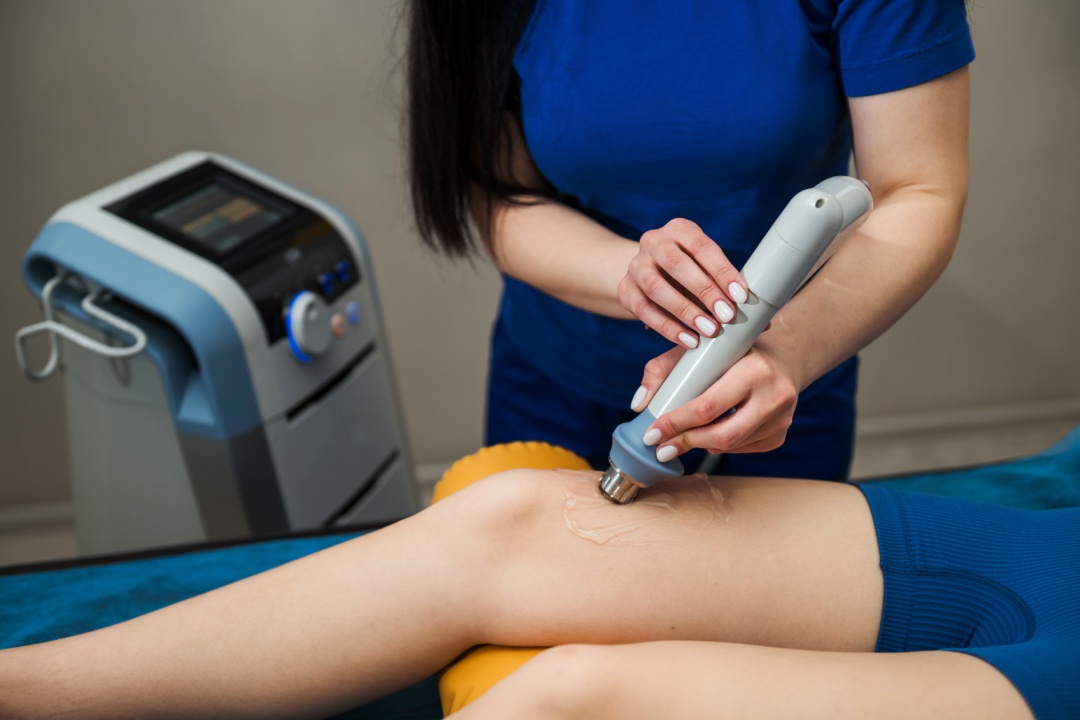Chronic tendinopathy, a persistent and often debilitating condition affecting tendons, has been a challenge for many individuals, from athletes to office workers. Extracorporeal Shockwave Therapy (ESWT) has emerged as a groundbreaking treatment for this condition, offering relief where traditional methods may fall short. However, maximizing the results of ESWT requires a clear understanding of the condition, the therapy, and the steps necessary to optimize outcomes.
Understanding Tendinopathy
Tendinopathy is the degeneration and inflammation of a tendon, the fibrous tissue connecting muscle to bone. It is often the result of repetitive overuse or insufficient healing of minor injuries. It encompasses two conditions:
- Tendinitis: Inflammation of the tendon, typically associated with acute injury.
- Tendinosis: Chronic degeneration of tendon fibers without significant inflammation, more common in long-term conditions.
The condition often manifests pain, swelling, and reduced functionality, typically in areas like the Achilles tendon, rotator cuff, or lateral epicondyle (tennis elbow).
Causes of Tendinopathy

Tendinopathy is caused when tendons are subjected to repetitive stress or overload, leading to microtears and insufficient healing.
Key causes include:
- Overuse: Repeated movements in sports or occupational tasks.
- Aging: Decreased tendon elasticity and healing capacity with age.
- Improper Biomechanics: Misalignments in posture or movement that stress the tendon.
- Underlying Health Conditions: Diabetes, obesity, and metabolic disorders can impair tendon health.
Symptoms of Chronic Tendinopathy
Symptoms often include localized pain, swelling, stiffness, and reduced range of motion. Tendons have a limited blood supply, which slows healing, making chronic tendinopathy particularly challenging to manage. Untreated, it can severely impact mobility and quality of life.
The following issues could indicate that you are suffering from tendinopathy.
- Persistent pain that worsens with activity.
- Stiffness, especially in the morning.
- Swelling or thickening around the affected tendon.
- Weakness or decreased range of motion.
Who is prone to develop tendinopathy?
The bar graph below illustrates the prevalence of tendinopathy among groups that are more susceptible to developing it. Each bar represents the estimated percentage of individuals within that group.

Traditional Treatment of Tendinopathy
Traditional treatment optimization of tendinopathy typically involves a combination of rest, ice, compression, and elevation (RICE) to reduce inflammation and alleviate pain. Non-steroidal anti-inflammatory drugs (NSAIDs) may be prescribed to manage discomfort.
Physical therapy is crucial, focusing on eccentric strengthening exercises to promote tendon healing and restore function. In chronic cases, corticosteroid injections may be considered to reduce inflammation, though they carry a risk of weakening the tendon over time. Prolonged immobilization is generally avoided to prevent stiffness and loss of mobility.
Emerging Treatment for Tendinopathy

Extracorporeal Shockwave Therapy (ESWT)
Extracorporeal Shockwave Therapy (ESWT) is a non-invasive treatment that uses high-energy acoustic waves to stimulate healing in affected tendons. It is particularly effective for chronic tendinopathy that has not responded well to other treatments, such as rest, physical therapy, or medications.
How ESWT Works
- Stimulation of Blood Flow: Shockwaves increase local circulation, delivering oxygen and nutrients to the damaged area.
- Promotion of Cell Regeneration: ESWT activates fibroblasts and stem cells to repair damaged tendon fibers.
- Reduction of Pain: The therapy modulates nerve activity and reduces the pain response.
- Breakdown of Calcifications: ESWT can help disintegrate these buildups for tendons with calcific deposits.
Benefits of ESWT
- Non-invasive and does not require anesthesia
- Supports tissue regeneration and healing
- Minimal recovery protocol: patients can often resume daily activities quickly
- Effective in treating chronic cases where other therapies have failed
8 Steps to Maximizing ESWT Results for Tendinopathy

While ESWT is one of the powerful healing factors for achieving optimal results, it requires careful planning and post-treatment care.
1. Choose the Right Provider
Select a qualified healthcare professional experienced in administering ESWT. Their expertise in identifying the precise treatment area and calibrating the shockwave intensity ensures better outcomes.
2. Combine ESWT with Physical Therapy
Physical therapy complements ESWT by strengthening surrounding muscles, improving mobility, and reducing tendon strain. A tailored program should include:
- Eccentric Strengthening Exercises: Proven to enhance tendon healing and resilience.
- Stretching Routines: To maintain flexibility and prevent stiffness.
- Corrective Techniques: For posture or movement errors contributing to tendinopathy.
3. Manage Activity Levels
Avoid overloading the tendon during the recovery period. Engage in low-impact activities like swimming or cycling to maintain fitness without stressing the injured area.
4. Maintain Proper Nutrition
Nutrition plays a significant role in tendon healing. Incorporate foods rich in:
- Collagen: Found in bone broth or supplements to support tendon repair.
- Vitamin C: Helps synthesize collagen and reduce inflammation.
- Omega-3 Fatty Acids: Found in fish and flaxseeds to combat inflammation.
5. Address Underlying Biomechanical Issues
If poor biomechanics contributed to tendinopathy, addressing these is crucial. Orthotics, ergonomic adjustments, or retraining movement patterns can prevent recurrence.
6. Be Patient with Results
ESWT often requires multiple sessions (3-5 treatments spaced weekly) for full effectiveness. Tendon healing is gradual, and improvements may take weeks or even months.
7. Monitor Progress Regularly
Work closely with your provider to assess improvement and adjust your treatment plan.
8. Avoid Anti-inflammatory Medications
Although tempting, non-steroidal anti-inflammatory drugs (NSAIDs) can interfere with the healing process promoted by ESWT.
Extracorporeal Shockwave Therapy is a game-changing solution for chronic tendinopathy, providing hope for patients who have exhausted other treatment options. However, maximizing its results requires a holistic approach, including proper diagnosis, complementary therapies, and lifestyle modifications. With patience and the right strategies, individuals can reclaim mobility, reduce pain, and prevent future injuries.
A qualified specialist can provide this service to determine if this innovative treatment suits you. Your journey to pain-free movement may only be a shockwave away!
Chockwave provides innovative technologies for healthcare providers to serve their patients. Contact us today to accelerate your practice’s growth and provide your patients with the best care.





